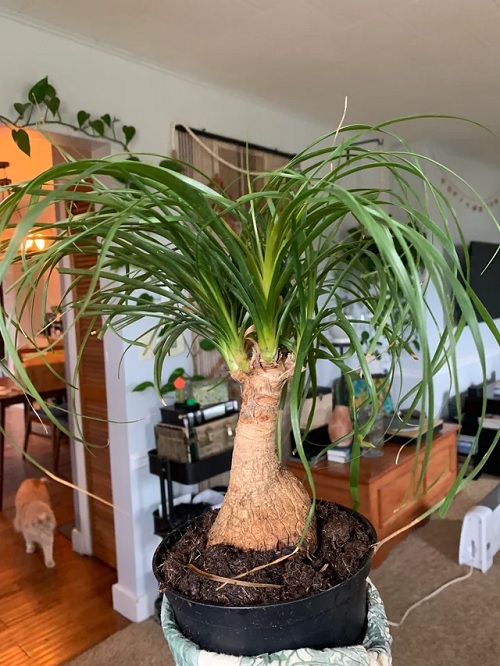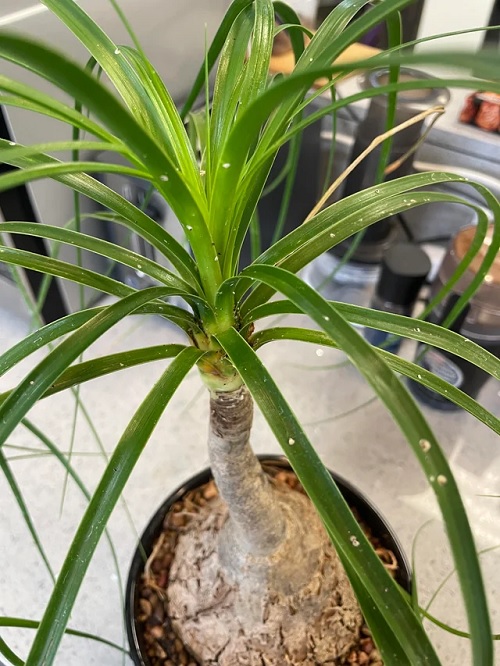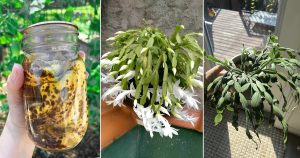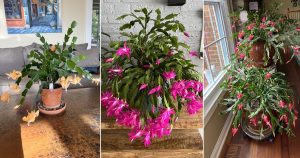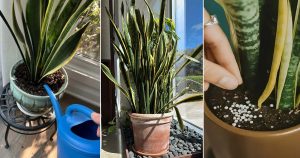Learn how to care for your ponytail palm for common issues like root rot, dehydration, nutrient deficiency, acclimation, and how to fix them.
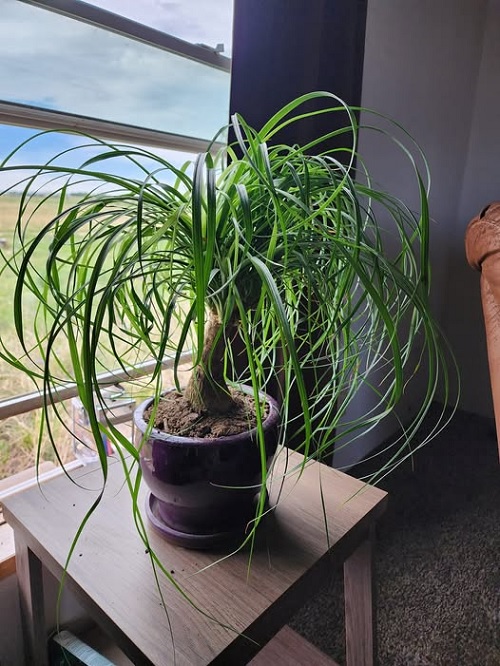
Ponytail palms are those adorable and low-maintenance plants that can add a touch of joyfulness to any corner of your home. But they require specific care and attention to thrive, as they can be easily affected by a lot of things. Learn what they are and how to fix them by reading ahead.
Common Ponytail Succulent Problems and Fixes
1. Root Rot and Stem Rot
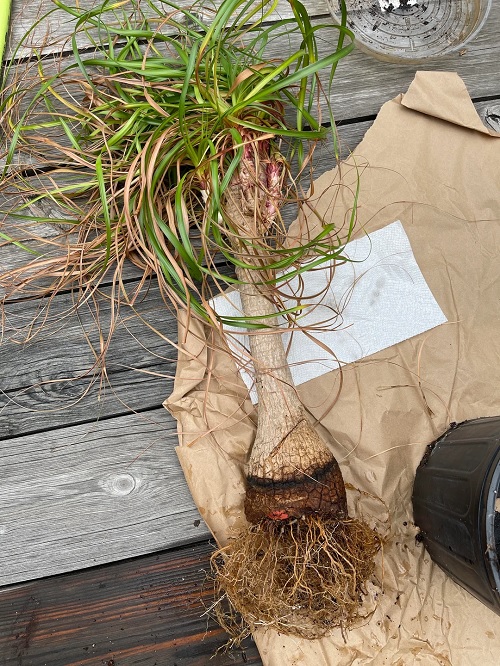
Too much love—in the form of water—can backfire. Overwatering and poor drainage are the main culprits behind root and stem rot. The soil stays soggy, and the roots start turning brown and mushy, while the leaves turn yellow and limp.
Let the soil dry completely, then repot the plant in a well-draining cactus or succulent mix. Trim off all mushy roots before replanting. Always use a pot with drainage holes — your ponytail prefers its feet dry, not drenched!
2. Plant Dehydration
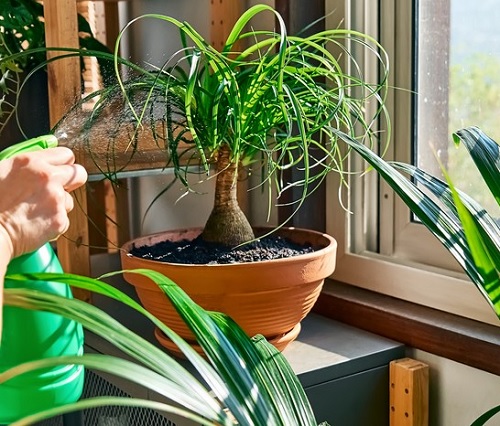
If your ponytail palm’s leaves turn brown and crispy or curl inward, it’s crying out for a drink. The trunk may also look shrunken and less plump — a clear sign it’s running low on water.
Check the soil by sticking your finger a few inches deep. If it’s dry, it’s time to water. A good soak every two weeks works best. Try bottom watering by placing the pot in a basin of lukewarm water for about 45 minutes — it lets the soil drink up evenly. Soon, you’ll see fresh green growth again.
3. Nutrient Deficiency
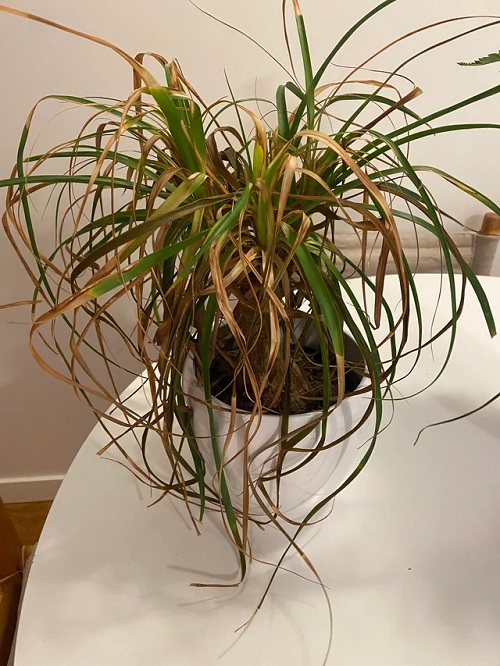
Yellow leaves can be a sign of nutrient deficiency in either manganese, magnesium, or nitrogen. A potting mix brings the ideal consistency for cacti and succulents, but it lacks nutrients. Test your soil for the nutrients it lacks using a testing kit and choose a fertilizer that compensates for them.
For optimal results, use a slow-release fertilizer according to the package instructions. It may take 1-2 months to see the effects, so during that time, avoid under-fertilizing or over-fertilizing, as both are dangerous for the plant.
4. Over-fertilizing
When it comes to feeding, less is more. Too much fertilizer burns the roots and leaves, turning them brown. Feed your ponytail only during spring to fall, then give it a winter break.
Start with a diluted succulent fertilizer — half strength is plenty. If you overdo it, flush the soil with clean water once or twice to remove salt buildup. As they say, “you can’t pour from an empty cup” — or in this case, you can’t fix an overfed plant overnight, so go slow.
5. Frost Damage
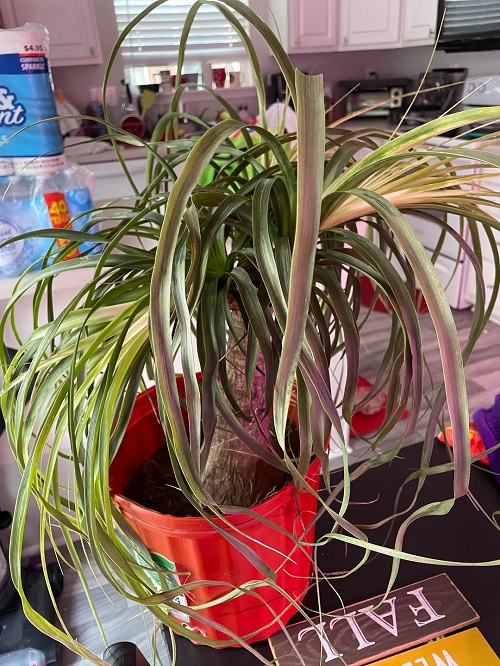
To prevent frost damage, bring ponytail palms indoors when night temperatures are expected to drop below 20°F. Frost damage causes the trunk to rot, leaves to turn brown or black, and leads to infection. If damage occurs, prune affected areas, clean, and apply copper fungicide. Reapply after 10 days, then fertilize to bring new growth.
Repeat the fertilizer application process once a month, taking care not to over-fertilize. As new growth appears, the leaves might look a little bizarre due to frost damage. Give the plant time to adjust, and water it deeply every 2 weeks. With proper care, your plant will recover and thrive over time.
6. Mealybug Infestation
Mealybugs can severely damage plants by secreting a white fluff, draining sap, and causing yellowing leaves and mold growth. To control infestations, isolate the plant, prune affected areas, and dispose them carefully. Then, apply a pesticide treatment to remove the mealybugs and prevent further damage.
Use a pesticide containing pyrethrin or neem oil. You can also use 70% isopropyl rubbing alcohol to kill the bugs by dabbing them with a soaked cotton swab or applying it to the leaves. For a spray solution, mix 1 part alcohol with 1 part water and add a bit of dish soap. Apply at a cooler time of day, avoiding direct sunlight, and repeat.
7. Shrinking Trunk
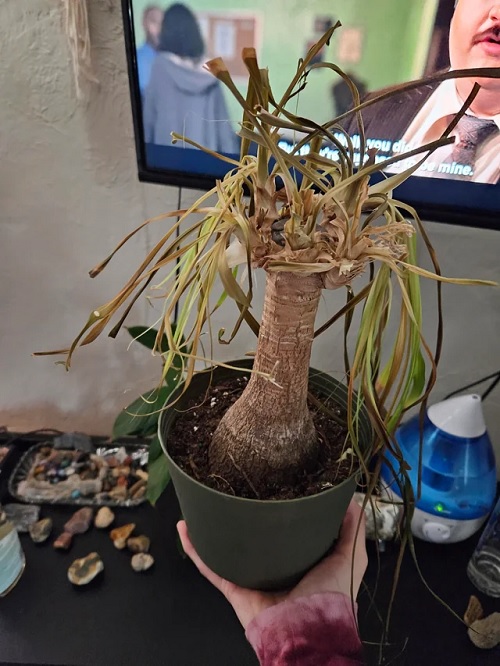
A shrinking trunk on a ponytail palm can be normal, as the caudex stores water and deflates when used. This usually indicates it’s time to water. However, drastic shrinkage requires deep watering. Choose a pot slightly larger than the caudex, keeping it firm, and gradually size up pots as the plant grows.
When planting a ponytail palm, leave half of the caudex above the soil. Water carefully to avoid getting the caudex wet, which can lead to rot. Allow the soil to dry out sufficiently between waterings.
Helpful Hint: If your plant’s trunk stays soft even after watering, check for hidden root rot—it could be a drainage issue, not dehydration.
8. Acclimation
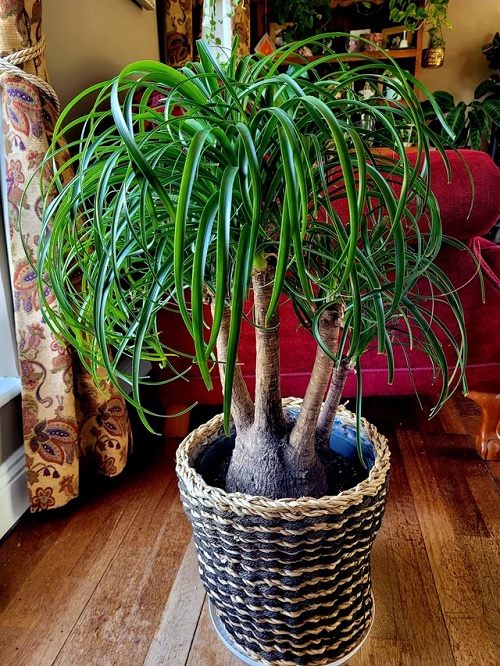
If your ponytail palm looks sick, acclimation can be a possible cause, especially after bringing it home from a greenhouse or moving it to a new spot in your house. This can cause stress due to changes in the environment, such as different light, temperature, or air flow, which might make the plant behave weirdly.
Give your plant time to adjust to its new environment, let it settle without any stress. With proper care and patience, it should acclimate and recover, eventually thriving and growing happily.
By understanding these common issues and knowing how to tackle them, you can keep your ponytail palm healthy and thriving. But wait, don’t forget to share your story of bringing your ponytail back to shining in the comments below.

